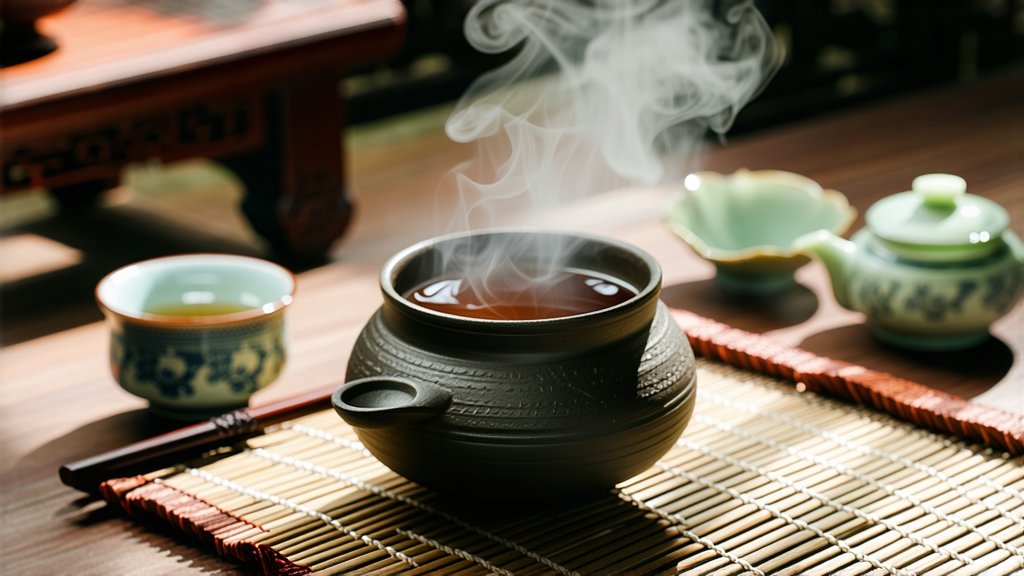
Pu-erh tea, one of the most distinctive varieties of dark tea originating from China, holds a revered place in the annals of global tea culture. This unique tea is not merely a beverage; it is a testament to centuries of tradition, craftsmanship, and cultural heritage. In this exploration, we will delve into the rich history, diverse types, intricate production processes, and sophisticated methods of appreciating Pu-erh tea.
Historical Significance
The origins of Pu-erh tea trace back over 1,700 years to the ancient caravan routes in Yunnan Province, China. Historically, this region was a critical juncture for the ancient Tea Horse Road, which facilitated the trade of tea between China and Tibet. The unique climate and geographical conditions of Yunnan, with its fertile soil and misty high-altitude mountains, provided an ideal environment for cultivating the Camellia sinensis var. assamica plant, which is primarily used in Pu-erh production.
Types of Pu-erh Tea
Pu-erh tea can be broadly categorized into two main types: raw (Sheng) and ripe (Shou). Each type undergoes a different aging process, resulting in distinct flavors and characteristics.
-
Raw Pu-erh (Sheng): This type undergoes natural fermentation over time. Fresh leaves are plucked, sun-dried, sorted, and then either pressed into cakes or left loose. The aging process can span several decades, during which the tea develops complex, earthy, and sometimes floral notes.
-
Ripe Pu-erh (Shou): Invented in the 1970s to expedite the aging process, Shou Pu-erh involves a post-fermentation "wet piling" method. This accelerates the transformation of the tea leaves through controlled microbial activity, giving the tea a smooth, mellow flavor with hints of wood and earth.
Production Process
The journey from leaf to cup is an intricate process that involves several stages:
-
Plucking: High-quality buds and young leaves are selectively handpicked.
-
Withering: The freshly picked leaves are spread out to dry in the sun, reducing moisture content and softening the leaves.
-
Fixation: The withered leaves are briefly stir-fried or steamed to halt enzyme activity.
-
Rolling: The fixed leaves are rolled into shapes suitable for further processing.
-
Fermentation: For Sheng Pu-erh, the leaves are piled and allowed to ferment naturally over time. For Shou Pu-erh, the leaves undergo a controlled fermentation process in a humid environment, often lasting several months.
-
Drying: After fermentation, the tea is dried to remove excess moisture.
-
Aging: Both types of Pu-erh benefit from aging, with Sheng developing more complex flavors over decades and Shou achieving a smoother profile within a shorter period.
Appreciation and Tasting
Appreciating Pu-erh tea is an art form that requires attention to detail and an understanding of its nuances. Here's a guide to savoring this exquisite tea:
-
Preparation: Use a Yixing clay teapot or a Gaiwan for the best experience. Rinse the teapot with boiling water to warm it up.
-
Infusion: Add 5-8 grams of tea per 150 ml of water. Use spring water heated to around 95°C (203°F) for raw Pu-erh and slightly cooler for ripe Pu-erh.
-
First Brew: Discard the first brew to 'wash' the leaves and awaken their full potential.
-
Subsequent Brews: Steep for 10-30 seconds, gradually increasing the steeping time with each subsequent brew. Pu-erh tea can typically be infused multiple times, with each brew revealing different flavor profiles.
-
Observation: Examine the tea liquor's color, clarity, and aroma. Note any changes across different infusions.
-
Tasting: Sip slowly, paying attention to the tea's texture, body, and evolving flavors. Sheng Pu-erh often starts astringent and bitter but mellows with age, while Shou Pu-erh is smooth and sweet from the onset.
Conclusion
Pu-erh tea is more than just a drink; it is a cultural treasure that encapsulates the essence of Chinese tea traditions. Its rich history, diverse types, intricate production methods, and sophisticated tasting rituals make it a fascinating subject for both novices and connoisseurs alike. Whether you are drawn to the robust, evolving flavors of raw Pu-erh or the smooth, comforting profile of ripe Pu-erh, exploring this dark tea offers a profound connection to centuries-old practices and an unparalleled sensory experience.